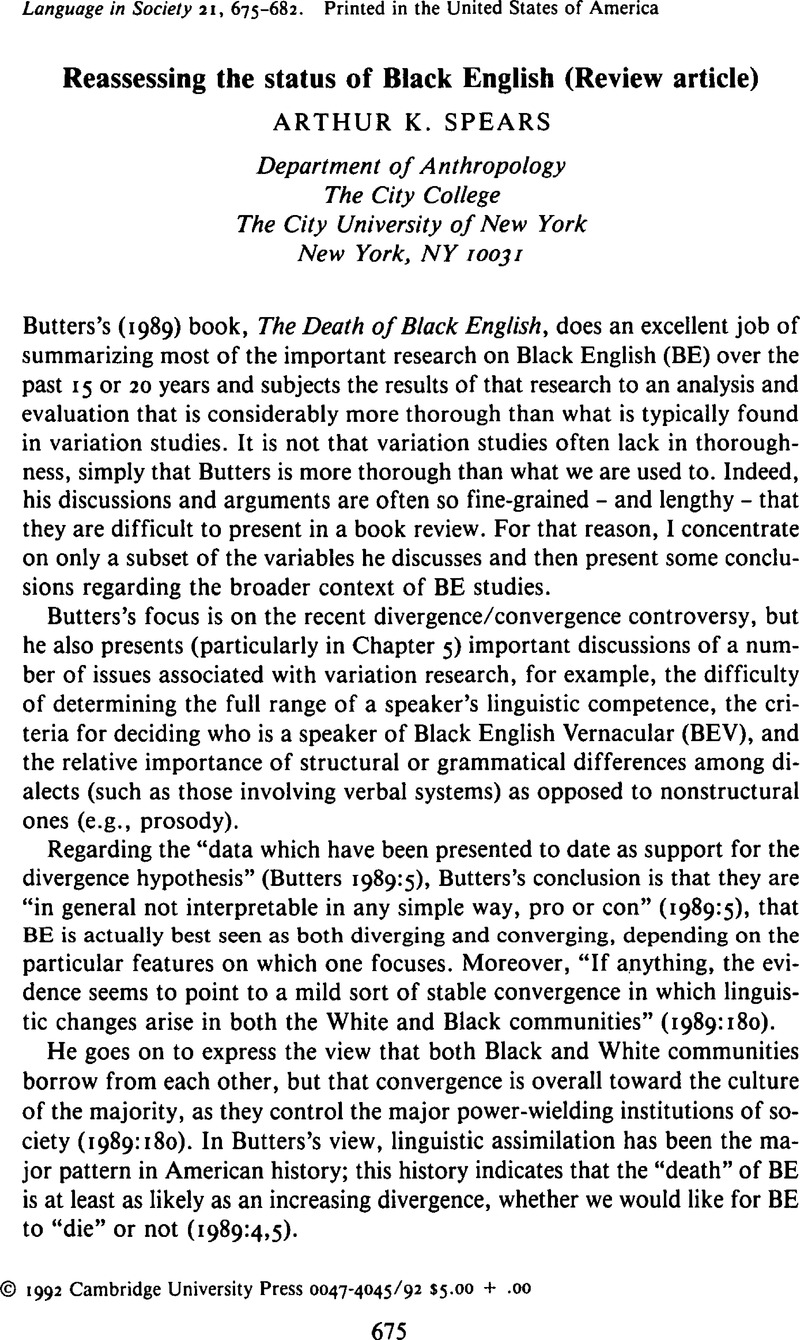Crossref Citations
This article has been cited by the following publications. This list is generated based on data provided by Crossref.
Harris, Ovetta
Anderson, Vicki
Bloome, David
and
Champion, Tempii
1995.
A select bibliography of research on Africanized English and education.
Linguistics and Education,
Vol. 7,
Issue. 2,
p.
151.
Wald, Benji
1995.
The problem of scholarly predisposition: G. Bailey, N. Maynor, & P. Cukor-Avila, eds., The emergence of Black English: Text and commentary.
Language in Society,
Vol. 24,
Issue. 2,
p.
245.
Oetting, Janna B.
and
McDonald, Janet L.
2001.
Nonmainstream Dialect Use and Specific Language Impairment.
Journal of Speech, Language, and Hearing Research,
Vol. 44,
Issue. 1,
p.
207.
Tracy, Karen
2024.
“Race Trouble”: Competing Accounts in a Trial About Anti-White Racism.
Journal of Language and Social Psychology,
Vol. 43,
Issue. 1,
p.
14.



